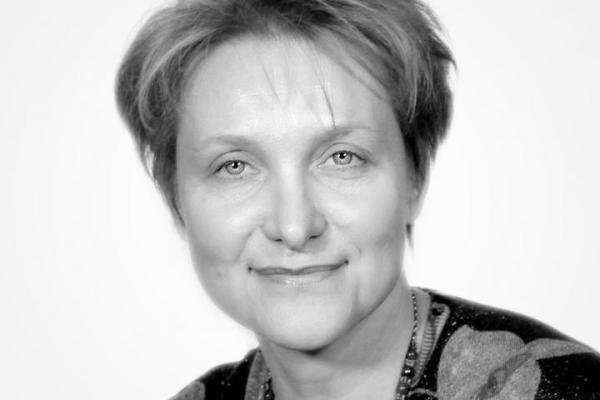Intercultural Education as a Pathway to Understanding: An Interview with Dr. Marijanca Ajša Vižintin, Part 2

By Gillian Ginley, CSEEES Spring 2023 Intern
Dr. Marijanca Ajša Vižintin was named by the Board of the Slovene Research Initiative (SRI) in Slovenia as their Visiting SRI Scholar to The Ohio State University for 2023. Vižintin works at the Slovenian Migration Institute (Research Centre of the Slovenian Academy of Sciences and Arts) and at the School of Humanities (University of Nova Gorica). Her research interests include integration, inclusion, intercultural education and Slovenian emigration and immigration. During her time in Ohio she visited various institutions in Columbus and Cleveland to find connections for possible future collaboration. Vižintin also participated in the 2023 Midwest Slavic Conference with a presentation on Slovenian organizations in Bosnia and Herzegovina. She kindly agreed to an interview with CSEEES intern Gillian Ginley. Read part 1 of the interview here.
What are some of the main obstacles that Slovenian migrants face today? What issues are some of the pressing issues surrounding immigrant children in primary schools in Slovenia?
Slovenians who emigrate today are lucky because they are not in a refugee situation like some other Eastern European countries. We [Slovenians] are and have always been economic migrants. In most cases, we travel or emigrate to Austria or Germany for work. Slovenia has a large number of immigrants from other countries of former Yugoslavia, with the majority coming from Bosnia and Herzegovina, Kosovo, Serbia and more coming from other countries all over the world. There are not many people coming to Slovenia for refuge; many refugees will go to Western Europe, particularly Germany, Sweden and Norway. Because I work at the Slovenian Migration Institute, we work with migration theorists, but I also enjoy working with the people in the community and interviewing both emigrants and immigrants and recording their life stories. For example, I interviewed a couple that emigrated from Slovenia to Germany in the 70’s for economic mobility. This couple, and others who emigrated from Slovenia, as well as those who immigrate to Slovenia, often have the same doubts and fears about living in new environments. They all want to learn the native language, they want to find jobs, they want to send their children to school, so they need to learn the local environment in order to feel included. They share many of the same perspectives because when you are an emigrant from one country, you are an immigrant in another country. We at the Slovenian Migration Institute often use this perspective when we try to overcome prejudices because people are so often not aware of the similarities they have to the immigrants in their communities.
After spending some time at Ohio State, what are some of the similarities and differences you have seen with American and Slovenian universities?
First of all, I love Columbus. It’s beautiful with all the green space and trees. I especially love Ohio State’s campus and the Oval, as well as Thompson Library. In Slovenia, we do not have university campuses like Ohio State. In Slovenian universities, faculties are spread all around town. For example, in the capital, we have faculties and departments in different areas of the city. Each faculty has its own library for research, and there is also a National Library that serves as both a university library and public library. Another difference in education systems is that kindergarten is not free, and parents must pay to send their children to kindergarten, but primary school, secondary school, and university education is free of charge. Besides kindergarten, the only other aspect of education that is not free is doctorate or PhD programs. Here in America, and at Ohio State, students must pay thousands of dollars for their university education, and it is not like that in Slovenia. I think this is why Slovenia has one of the highest rates of university completion in the world.
When it comes to the teaching of intercultural education, I have talked with some colleagues here at Ohio State, and we have concluded that we struggle in many of the same areas. One of these shared issues is preparing teachers for diversity and inclusion, developing their intercultural competence, before entering the classroom. It is a struggle not just in America and Slovenia all over Europe. We as educators in intercultural competence still have a lot of work to do and I hope to collaborate with some of my colleagues here at Ohio State in the future to make this world and school system more inclusive and intercultural.
What activities or events did you participate in during your time here at Ohio State? What are some that you would recommend that students at Ohio State take advantage of during their time here?
During my time here, I was able to attend a lot of lectures because I am here to learn. I am here to connect with people that work with immigration and inclusion, so I came here to meet some people to work with in the future. I was able to visit the different sites that Ohio History Connection preserves around Columbus and learn how these areas are related to ancient and contemporary history in the city of Columbus. Another colleague took me to the Columbus Zoo, and I was impressed because a lot of animals that the zoo rescues are able to be rehabilitated and released back to their country or area of origin. I am impressed by the museums here in Columbus, especially the Columbus Museum of Art. I love all the bookshops in Columbus that I have discovered, and I loved exploring Italian Village and German Village, so I would recommend that students explore more off campus areas and enjoy all that the city of Columbus has to offer.
